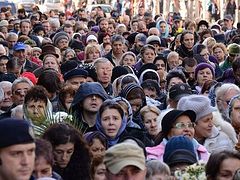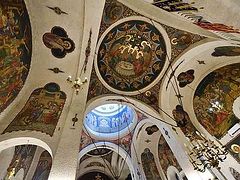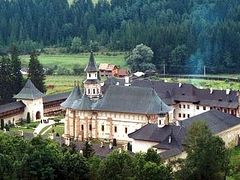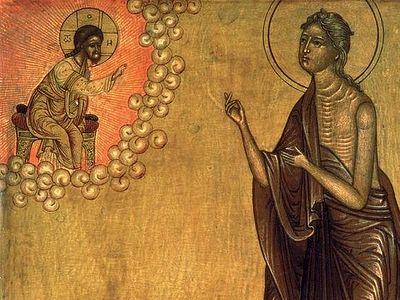Monk Dosifey/Dosipheus (Gorbachevsky) serves at the Holy Trinity (Radu Voda) Orthodox Monastery in Bucharest. In November 2018 he was present at the scholarly and practical conference on “The Church’s care for the mentally ill”, held within the platform of the Russian Orthodox Church’s Inter-Council Presence.
 Monk Dosifey (Gorbachevsky)), photo by Monasterium.ru
Monk Dosifey (Gorbachevsky)), photo by Monasterium.ru Going back in time
—Brother Dosifey, the subject of the conference deserves a separate study, but today we would be happy to talk about the life of our sister Romanian Local Orthodox Church with its centuries-old distinct liturgical traditions, numerous holy sites, and so on. Thank you for taking time to meet with me. At the beginning of our talk, can you tell us in a few words about yourself, your spiritual journey, and how you became a member of the Church?
—I was born forty years ago to a Russian family in Romania. I have lived all my conscious life there. I graduated from our Russian Embassy School, so my secondary education was Russian. As for my higher education, I studied medicine at a Romanian educational institution and obtained a Master’s degree in Theology at a Romanian university.
I began to go to church eleven years ago. At first I was a parishioner of our Holy Trinity Monastery. Four years ago I joined its community and last year received the monastic tonsure.
—But your Russian is brilliant, and you sound like a native speaker. It is impossible to master the Russian language in a secondary school alone.
—I am indebted to my mother (who once lived in Leningrad under the Nazi blockade) for this. She lived in the city under siege for three years till the age of nine and survived, and later, in 1959, she graduated from the Leningrad A.A. Zhdanov State University (this is what St. Petersburg State University was called between 1948 and 1991) with a degree in History.
—So you spoke Russian at home?
—Only Russian, though we lived in the center of Bucharest. Till the age of three my only language was Russian. Thus, my mother had “isolated” me from the Romanian language till I turned three. Then she sent me to a Romanian kindergarten. So I speak both languages fluently. That’s the whole secret of it.
 Patriarch Justinian of Romania (1901-1977)
Patriarch Justinian of Romania (1901-1977) —I’m not sure. Perhaps it is with the help of God because it is very hard indeed. But these visits to Russia and personal contacts (and it’s the fourth time I’ve represented the Romanian Orthodox Church in various Russian forums) help me keep up my language skills.
—The Local Romanian Orthodox Church has close ties with the Russian Church. I remember that Patriarch Justinian would often come to the Holy Trinity-St. Sergius Lavra near which I was born and where I attended services in my childhood. The fact that, unlike our monks and hierarchs, all his vestments—klobuk, ryasa, and cassock—were white, imprinted on my memory. I still wonder if the relationship between our Churches has changed since that period. Today our Churches organize fewer joint meetings, conferences and assemblies (as a rule they were held at the Holy Trinity-St. Sergius Lavra) than before. What can you say about the current contacts between our Churches?
—I would like to speak a little about Patriarch Justinian of Romania. He was a unique man and, in some sense, even a prophet for our Church. He was formerly a married priest—he had a wife and two children. He performed his pastoral ministry diligently. Then he was widowed and after the end of the Second World War he became the primate of our Church. By the way, the patriarch befriended the ex-General Secretary of the Communist Party of Romania whom he had sheltered from the secret police in his home before the war. Divine Providence was evident here!
Having become the head of our Church, Patriarch Justinian saw that society had changed dramatically. Afterwards he used to say: “We will be driven out of schools, will be driven out of hospitals and from all spheres of social activity. But where a church will remain, there will be an altar. Where there will be an altar, there will be a priest as well. Where there will be a priest, there will be the Liturgy. And where there will be the Liturgy, there will be Eucharist.” So evangelism was concentrated in churches.
Although the Romanian Church suffered persecutions under the godless Communist regime and produced its own New Martyrs (who haven’t been canonized yet), it did not suffer as much as the Bulgarian and Albanian Churches, let alone the Russian Church.
Over the twenty-nine years of his tenure (1948-1977) Patriarch Justinian visited the Soviet Union eleven times. All of this was part of the movement “promoted” by Communist authorities of the “socialist camp” countries, namely, Romania, Bulgaria, and, of course, the “elder brother”—the Soviet Union. This movement was called “struggle for peace”. This accounts for the close ties between our Churches over that period. Patriarch Justinian passed away in 1977, and one of his successors, His Holiness Patriarch Theoctist (1915-2007), participated in the celebration of the millennium of the Baptism of Russia in Moscow in 1988. But then you had your perestroika—a new era, the era of Gorbachev.
We are united in Christ
—When I and our other authors analyze the Church affairs of the mid-to-late-twentieth century, we arrive at a conclusion that the Soviet authorities involuntarily facilitated the strengthening of the bonds between Churches on a personal level. But our hierarchs, the Church hierarchy, knew each other quite well.
—Definitely! It was providential again. True friendly relations were established under this ideological “curtain”, and it is an example of the possibility of inter-Orthodox communication even in the most difficult times for the Church. We are united in Christ both historically and through the Eucharist.
 Catholicos-Patriarch Ephraim II (Sidamonidze) of All Georgia and Patriarch Alexey I (Simansky) of Moscow and All Russia
Catholicos-Patriarch Ephraim II (Sidamonidze) of All Georgia and Patriarch Alexey I (Simansky) of Moscow and All Russia —I believe we will always maintain warm, amicable relations because, as I’ve already said, we are united in Christ. Even if there are no outward signs, it is like communication between two Orthodox souls, kindred spirits, one of which is, say, in Moscow, and the other one is in Magadan. It is not necessary for us to meet—praying for each other will be enough. We commune from the same chalice of the Eucharist; and there is the same undivided Christ in millions of chalices all over the world! This is what the sacrament of Eucharist is about—Christ is undivided. Christ is wholly present in every particle of consecrated bread. As for the policies of our states, we all know that they tend to change day after day.
—Eleven years ago you became a church-goer. How did it come to pass? Did you feel something special, like a calling? Today many young people are at the crossroads, asking: “What can the Church give us?” They mainly learn information about the Church on TV, from the internet and secular mass media. And the facts about the Church presented by most modern secular journalists are negative…
—What attracted me at our monastery were its services, which were beautiful, very spiritual, and properly celebrated with the strict observance of the Typicon. The rites, the ceremony, as it were, had a great appeal for me. I think that full services according to the Typicon (and not the shortened ones) with their beauty are of paramount importance to new members of the Church. This is essential at the first stage of the integration into church life! After all, it was the awesome, dazzling Orthodox worship that impressed the ambassadors of the Holy Equal-to-the-Apostles Prince Vladimir. And Orthodox worship won my heart in the same way!
True, during the process of integration into church life you realize that worship in church is not the most important thing. Rites and ceremonies are just a result of proper spiritual life. In due time, as a result of our personal piety we will draw closer to God and take the path of theosis.
To answer the second part of your question: The Church can give eternal salvation to young people and lead them to the Heavenly Kingdom. But seek ye first the Kingdom of God, and His righteousness; and all these things shall be added unto you (Mt. 6:33). So the answer is very simple.
—Were you baptized as an infant or as an adult?
—I was baptized as an infant. In Romania we simply don’t have this problem of whether or not to be baptized. True, we still do have people who do not go to church, but this is a long-term result of the Communist regime in our country (it lasted around forty years). Nevertheless, all our people (including the Communist Party members and their families and children) were baptized and married in Church from generation to generation.
Although, sometimes our Communist Party leaders were baptized in their homes. Most of Church sacraments must be performed in the Church, but some of them can be performed at home in extreme cases. And the sacrament of Holy Matrimony was often performed at home in our country under Communism. I know many cases when distinguished political and military figures did this because they didn’t want to make their personal lives public.
—You have already answered two very important questions, and I want to call on our readers to pay special attention on this. I’d like to stress that you’ve answered those people who claim that church rites and ceremonies are not so important, that they should be simplified, reduced, or even ignored, and that our grand Divine Liturgy, beautiful choir singing, splendid church vestments, and stunning church architecture and art allegedly don’t really matter. I will add that all of this has a strong impact on the soul of a child.
I remember that in my own childhood, church services made a deep and lasting impression on my heart, they were imprinted on my memory and became a good foundation for the future. A child has a gut feeling that if we serve God in this way, it means that He is the power and the Might, the light and the love that we preach and that we are supposed to serve Him only in this manner! And today there has been a lot of debate about this…
But how was the Orthodox faith preserved in such blessed lands with well-established Orthodox traditions as Romania and Transcarpathia, where even in the Soviet era people would greet each other in the streets with the words: “Glory to Jesus Christ!” and the Communist authorities could do nothing to change that?
—In reality, we underwent persecutions, as you did, although our persecutions were not as severe as yours. Many of our churches survived thanks to Patriarch Justinian. Every Romanian village still has a parish church! And all we had to do after the fall of the Communist regime was to found churches attached to medical institutions. And we have succeeded in this: at present every patient care institution has a church or a chapel.
I want to tell you that in that “socialist” period our shops carried dye for Paschal eggs, and of different colors at that! The factory that produced dyes for fabrics produced food color for painting Paschal eggs as well!
—Likewise, in the 1970s in the USSR “spring” cakes were sold in our shops, which were an imitation of Paschal cakes. And everybody was aware of it.
—People preserved all the Orthodox traditions, especially in the villages, as the peasantry strictly followed the annual agricultural cycle in their lives. And this cycle, in its turn, was closely connected with the liturgical year and Church festivals. I am not sure if the blessing of the first furrow at the start of the sowing season is still performed in spring, but we do organize a lot of processions of the cross during times of drought or outbreaks of pandemic diseases. Thus we uphold our traditions.
“A hospital of emergency medical aid”
 The Holy Trinity Monastery
The Holy Trinity Monastery —What is the Holy Trinity Monastery like, where you serve? Can you tell us about it in more detail?
—Our monastery is situated in the center of the city. Monastic life began here in 1500. The main large church dates back to the early eighteenth century. The monastery was restored in the late 1990s; before then it had been used as a Supreme Party School and later as a seminary. It should be said that in Romania a seminary is no more than a high school that provides schooling in grades nine to twelve.
Later a new building for the seminary was constructed, and the original building of 1892 is now used as the living quarters for monks.
The monastery is relatively “young” and mission-oriented. We have eleven hieromonks, two archimandrites, and three hierodeacons; others are monks and novices. There are twenty-four people in our community in all.
Our monastery houses a particle of the relics of St. Nectarios of Aegina. While our main altar is dedicated to the Holy Trinity, our second altar is dedicated to St. Nectarios. We commemorate him on November 9 according to the new calendar; very many pilgrims flock to our monastery on that day, and countless miraculous healings occur at the saint’s shrine. There is a priest on duty near the shrine and he can hear confessions at any time. In other words, there is a “spiritual consulting room”, or even a “hospital of emergency spiritual aid” fourteen hours a day there!
 By the reliquary with the relics of St. Nectarios of Aegina
By the reliquary with the relics of St. Nectarios of Aegina —Is Bucharest a big city?
—Bucharest is the capital of Romania. With a population of 2 million inhabitants, it is the country’s largest city. Thus, the monastery is located in our most populous megalopolis.
—In our days the Holy Trinity-St. Sergius Lavra, Russia’s principal monastery, is experiencing a massive influx of Chinese tourists. And do the Chinese visit your monastery?
—Not yet. There are no Chinese visitors, but we do have a huge number of internal pilgrims coming to our monastery from every corner of Romania. Pilgrims even travel as much as 600-700 kilometers [from c. 372 to c. 434 miles] to visit our monastery and venerate St. Nectarios’s relics.
—Can you tell us a few words about the monastery’s internal life? Clearly, such a large and complex structure cannot be managed and maintained through efforts of the monks alone. Who do you invite to help you?
—Of course, we have some monastery laborers, but they are a small minority because our priests are involved both in the liturgical life and administrative work of our Church. All of our priests have higher education, some even have two or three degrees. I know that one of them got a degree in Land Surveying, and now is our topographer, in charge of surveying our diocese. He combines pastoral ministry with administrative work. Almost all of our priests (including those who also have other obediences) have their spiritual children. Besides, we have a farm where we are “co-workers” of our lay laborers, as it were.

—So, your community sustains itself, doesn’t it?
—Yes, it does.
—Does it engage in printing, publishing or any other type of activities?
—Surely our educational activities are not limited to sermons during the Divine Liturgy. For example, every Monday we hold “meetings”, or “courses” for our young parishioners. They are required to do their homework, discuss their lecture notes and fulfil the tasks we assign them.
—And then you conduct examinations?
—Yes, we do. But if somebody doesn’t want to work and be involved in this anymore, they drop out sooner or later. It doesn’t mean that they leave our Church, the Church of Christ, though! True, if you don’t have time for these lessons, you need not attend them. Meanwhile, we all should keep in mind that it is imperative to carry on our spiritual warfare, to attend services on Sundays and feast-days, to confess, and take Communion.

—Do many parishioners gather on major festivals in your monastery?
—We have a very large congregation that gathers on a daily basis, and on Sundays our large church is packed to capacity (it can accommodate up to 500 people). A queue to the relics of St. Nectarios of Aegina can be compared to that to the relics of the Blessed Matrona in Moscow!
Very many come to our monastery to receive the sacrament of Holy Unction. This sacrament is often performed in the Romanian Orthodox Church. I mean this sacrament administered to the faithful in the church rather than privately at the bedside of a sick person. Every church attached to our hospitals holds a service of anointing of the sick once a week. As for our monastery, the Holy Unction is performed twice a week, since it’s known that St. Nectarios, who died of cancer, heals from various grave diseases. People with cancer, leukemia, and other maladies flock to his relics, and many receive healing. In some sense, our monastery is “spiritually-and-medically oriented”.
—The Church established the Holy Unction as a sacrament of healing, didn’t it?
—Yes, but healing not only physical, but also spiritual illnesses! Spiritual and maybe even mental diseases are cured here, too. However, every time healing is the work of Divine providence. If we need a healing, it will certainly occur. But if we wouldn’t benefit from it, then we must endure our illness for our salvation. And nobody should become disillusioned…

—What can you say about church singing at your monastery? Who sings in your choir? Do your monks sing? And how do your parishioners take part in the life of the monastery?
—There are currently three kinds of church singing in Romania. There is choir singing, which is very similar to that in the Russian Orthodox Church (Bortnyansky, Kastalsky – we perform the work of Russian authors in Romanian, too). But it is done chiefly at the Sunday Liturgy and in cathedrals. That is, at a cathedral we can have Matins with Byzantine singing, followed by the Liturgy sang in a traditional four-part arrangement.
There is also the uniform way of singing, adopted in our Church several decades ago. Orthodox faithful can participate in it as well. It is very helpful when you have lack of professional choristers. Even somebody with no specialized education can participate. But, of course, the genuine Byzantine singing is currently being revived in urban churches and cathedrals. In big monasteries, where choir singers are either graduates or students of theological seminaries, the Byzantine singing is gaining popularity.
The Byzantine singing is now practiced in our monastery too (St. Nectarios was a Greek, so the Byzantine tradition is naturally being revived here) by students of the Faculty of Orthodox Theology of University of Bucharest, and they are joined by some of our monks who have a talent and are in the mood for doing this. True, not all of us are talented and ready to carry out this obedience. However, our gifted monks enjoy this kind of art and sing together with students at Sunday or festal services, when main obediences allow them.

—As regards the liturgical language, as far as I know in Romania it is the native language, right? How did this tradition develop? Are there any exceptions to the rule? You have mentioned the Byzantine singing: does it mean that your choir sings in Greek?
—No, the Byzantine chants are sung in modern Romanian. Likewise, all the services are celebrated in modern Romanian. And all of our liturgical books are written in modern Romanian (perhaps with only a handful of archaic words which were used 100 years ago). In the modern language and modern type with numerous explanatory notes. An example: unlike Russian tradition, we do not have, in addition to the standard Service Book, also separate order of service books for priests and deacons. Our Service Book has everything explained in detail, what the priest and deacon should do at each moment of the service. That is, our Service Book contains also the order of services, and all rubrics related to the church services.

“Everything around you is so different!”
—Over your short stay in Moscow you may have had an opportunity to compare our tradition, our churches, parishioners, and worship with yours. Can you share your impressions of church life in Moscow?
—Actually, you’d better ask someone else because I am feeling like a local here thanks to Russian culture I was imbued with from childhood. But I will tell you what Romanians feel on coming to Russia for the first time. Of course, the first thing you feel is that everything around you is so different!
 Inside the church of the Holy Trinity Monastery
Inside the church of the Holy Trinity Monastery —I should remind our readers that Romanians use the Roman alphabet.
—You’re absolutely right! We use the Roman alphabet. The Romanian language is in the family of the Romance languages1.
As a matter of fact, the translation of the liturgical language into Romanian was a gradual process. Some 500 years ago our Church worshipped in the “Middle Bulgarian” version of Church Slavonic. It was in Wallachia. Moldavia served in the Russian-Ukrainian version of Church Slavonic. It was an “office language” (even documents in the principality’s offices were executed in this language), so common people could barely understand it. This was followed by a transition period with the Romanian Cyrillic alphabet (where the Cyrillic alphabet was used to write the liturgical Romanian language), and then, after the reform of the alphabet, we adopted the Roman alphabet. Thus the Romanians returned to their roots – that is, the Proto-Romanian (or Ancient Romanian) liturgical language, which was used in the seventh to ninth centuries (though little is known about it).
—You’ve mentioned that for a Romanian everything seems so unusual and unfamiliar in Moscow. What exactly?
—Well, the wide scope of your church life, the size of your churches, and the fact that throngs of believers fill your churches on major feasts! Your church attendance is really higher than ours. As for church singing, some Romanians like it, others don’t like because they are not used to it (and after a two-or-three weeks’ pilgrimage you will naturally get used to it).
Romanians appreciate your architecture, particularly church architecture before the Petrine period which was influenced by Byzantine architecture. We see a contribution of Russian art of building and Russian spirituality very clearly here. And, notably, as if to confirm this fact, these old-style churches of post-Petrine period are to our liking, too. Among them are the Church of the Savior on the Spilled Blood, the Convent of Sts. Martha and Mary, and even the new cathedral of Moscow Sretensky Monastery!...
—You’ve said that Romanian liturgical culture stands at the crossroads between cultures and civilizations. Did the traditions of the Catholic Church ever influence it, either culturally or liturgically?
—The Romanian Orthodox Church is the dominant Church in Romania. Our situation is very different from that in other Autocephalous Orthodox Churches (such as the Polish Orthodox Church, the Orthodox Church of the Czech Lands and Slovakia, where the Orthodox are a minority). The vast majority of our population – between eighty-seven and ninety percent – are Orthodox.
But there is the western part of Romania, which was under Hungarian rule for centuries. It is there that different cultures and denominations meet. For example, an average village of this region has an Orthodox church, a Greek Catholic church, and a Protestant church. Different tendencies, from “Reformed–Calvinist” and “Lutheran-Evangelical” to Catholic, coexist there. You can easily find five churches in a Transylvanian village because the Hungarian and German minorities are present there. Though today there are fewer Germans than before: many moved back to Germany after the 1990s. It is remarkable that all these ethnic groups peacefully coexist. Nevertheless, Orthodox Romanians make up the majority of the population of Transylvania. Despite these differences, residents of this region support each other, live in peace and harmony, and are kindly disposed towards each other, albeit they speak different languages and go to different churches. There are also mixed marriages, but they have caused no conflicts or animosity so far.
Parallels
 Sretensky Monastery
Sretensky Monastery —You’ve recently paid a visit to the Holy Trinity – St. Sergius Lavra. Please, can you share your impressions? Perhaps the Lavra can be compared to your monastery: it is situated in the center of a megalopolis and in the heart of Russian Orthodoxy as it played a key role in Russian history for many centuries. St. Sergius of Radonezh through his ascetic labors unites a host of other saints of the Russian land, and not only of the Russian land.
—I would say that our monastery bears resemblance to Sretensky Monastery rather than the Lavra because Sretensky Monastery is situated in the capital’s center, too. Our monastery is like a small-scale model of Sretensky Monastery – our population is different, our city is less crowded, and everything else is “in miniature”, as it were.
While Russia maintains the tradition of building large monasteries and convents, Romania has numerous yet small monasteries. Monasteries and convents exist through the length and breadth of Romania. Almost every county and every diocese has dozens of monastic communities. Let us take the northern Diocese of Suceava at the border between Romania and Ukraine, or the southern Diocese of Ramnic at Ciscarpathia: there are dozens and dozens of monasteries there - there is simply no counting them! Four or five, maximum ten monks live in each of them.
I would say that the Lavra is like Putna Monastery, which was founded in 1466 by the Holy Voivode Stephen (Stefan) III the Great. He would found a church or a monastery after each victory over Turks. So I would draw such parallels. We are not a lavra – we are just an urban monastery.
We also have large communities for women – for example, Agapia Convent in Neamţ County. Metropolitan Hilarion of Volokolamsk in his documentary on Orthodoxy in Romania spoke a lot about these shrines. Their convent is “idiorrhythmic”: there are small dwellings with about ten nuns in each of them, who have a senior sister that gives them spiritual guidance and instruction. They normally meet in church during services on major festivals and Sundays, when they have fewer obediences.

—What would you like to say to our readers in conclusion?
—The Most Important Thing I’d like to say is That Russians, Romanians, and all Orthodox Christians are united in Christ. Both our Churches are united by our saints. St. Antipas of Valaam Monastery left his native Romania and remained in Russia, whereas St. Paisius Velichkovsky moved from Russia to Romania. Another eighteenth-century saint, St. Onuphrius of Vorona, moved from Russia to Romania as well. So, come to Romania to better understand our Orthodoxy, which is very special and very interesting, and the uninterrupted living tradition of Romanian monasticism, which is very special and original, particularly in the country’s rural areas.
Do come, make pilgrimages, and enjoy the life of Romanian Orthodoxy for the glory of God.




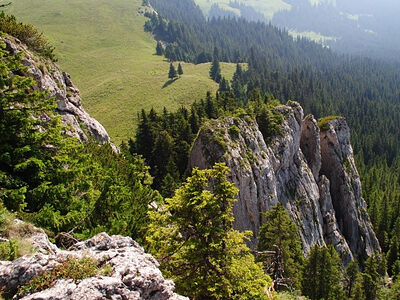
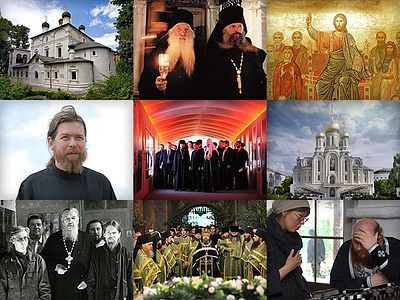

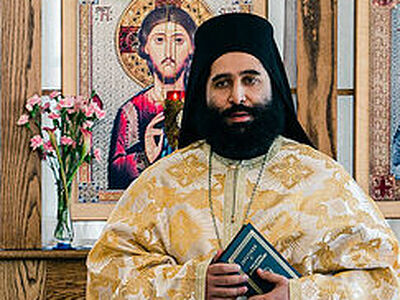
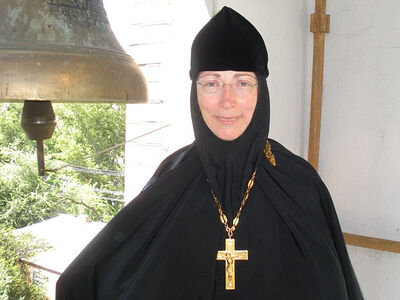
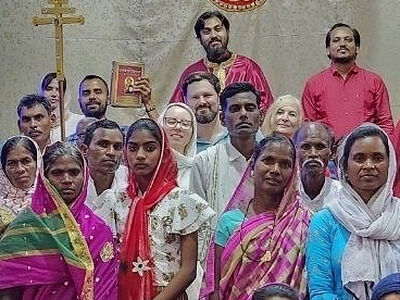
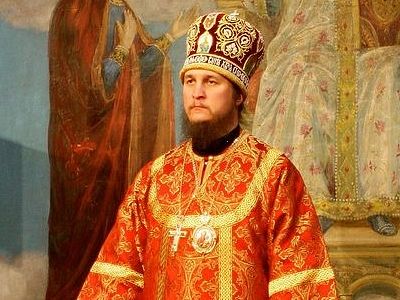 On Preparation for Holy Communion. “We must raise the standard”As the Lord said in the Gosples, He that is able to receive it, let him receive it (Mt. 19:12): one person may be capable of living an intense inner life, regularly go to church, and continually search his own conscience—as St. Ignatius (Brianchaninov) says, so that their minds would always swim in the Gospels, in the teachings of Christ. Another person might be so inwardly disposed that it is an ascetic labor for him to receive Communion only twice a year.
On Preparation for Holy Communion. “We must raise the standard”As the Lord said in the Gosples, He that is able to receive it, let him receive it (Mt. 19:12): one person may be capable of living an intense inner life, regularly go to church, and continually search his own conscience—as St. Ignatius (Brianchaninov) says, so that their minds would always swim in the Gospels, in the teachings of Christ. Another person might be so inwardly disposed that it is an ascetic labor for him to receive Communion only twice a year.  The Sacrament of the Holy EucharistMetropolitan Nektarios of Hong Kong and South East Asia delivered a speech on the Sacrament of the Holy Eucharist at the second ecumenical seminar which was held on Sunday, June 26, 2016, in Hong Kong.
The Sacrament of the Holy EucharistMetropolitan Nektarios of Hong Kong and South East Asia delivered a speech on the Sacrament of the Holy Eucharist at the second ecumenical seminar which was held on Sunday, June 26, 2016, in Hong Kong. Equal of the Apostles Great Prince Vladimir, in Holy Baptism Basil, the Enlightener of the Russian LandThe Holy Great Prince Vladimir, Equal of the Apostles. Few names in the annals of history can compare in significance with the name of St Vladimir, the Baptizer of Rus, who stands at the beginning of the spiritual destiny of the Russian Church and the Russian Orthodox people.
Equal of the Apostles Great Prince Vladimir, in Holy Baptism Basil, the Enlightener of the Russian LandThe Holy Great Prince Vladimir, Equal of the Apostles. Few names in the annals of history can compare in significance with the name of St Vladimir, the Baptizer of Rus, who stands at the beginning of the spiritual destiny of the Russian Church and the Russian Orthodox people. 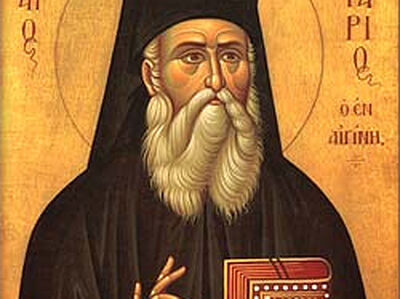 Saint Nektarios of AeginaWith the passing of St. Nektarios, a hospital nurse, assisted by a nun from the monastery, immediately began to change his clothes and threw his undershirt on the next bed. In this bed lay a paralytic, who once the undershirt landed upon him, was instantly healed and jumped out of bed praising God for his miraculous healing.
Saint Nektarios of AeginaWith the passing of St. Nektarios, a hospital nurse, assisted by a nun from the monastery, immediately began to change his clothes and threw his undershirt on the next bed. In this bed lay a paralytic, who once the undershirt landed upon him, was instantly healed and jumped out of bed praising God for his miraculous healing.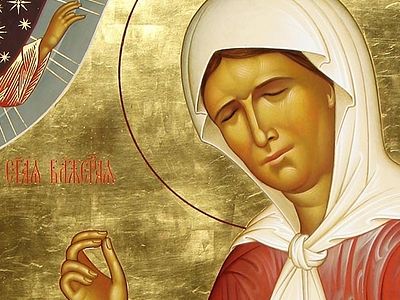 Miraculous Help from Blessed Matrona of Moscow in Our DayOn February 23/March 8 the holy Orthodox Church celebrates the uncovering of the relics of St. Matrona of Moscow, one of the most beloved saints in Russia today. Her relics are kept at Moscow’s Holy Protection Monastery, where believers constantly flock, seeking her intercessions. We present here a collection of stories about help received from Blessed Matrona, sent to the editor of Pravoslavie.ru.
Miraculous Help from Blessed Matrona of Moscow in Our DayOn February 23/March 8 the holy Orthodox Church celebrates the uncovering of the relics of St. Matrona of Moscow, one of the most beloved saints in Russia today. Her relics are kept at Moscow’s Holy Protection Monastery, where believers constantly flock, seeking her intercessions. We present here a collection of stories about help received from Blessed Matrona, sent to the editor of Pravoslavie.ru.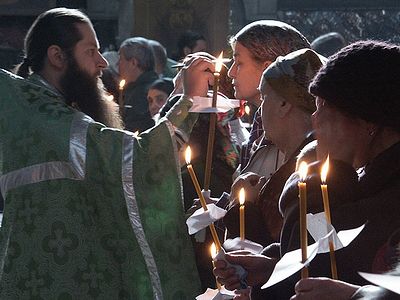 Holy Wednesday. The service of Holy UnctionIt is a tradition in the Orthodox Church for all the faithful to receive Holy Unction during Great Lent. In many churches, this service is celebrated specifically on Holy and Great Wednesday, after the Matins served that evening.
Holy Wednesday. The service of Holy UnctionIt is a tradition in the Orthodox Church for all the faithful to receive Holy Unction during Great Lent. In many churches, this service is celebrated specifically on Holy and Great Wednesday, after the Matins served that evening.